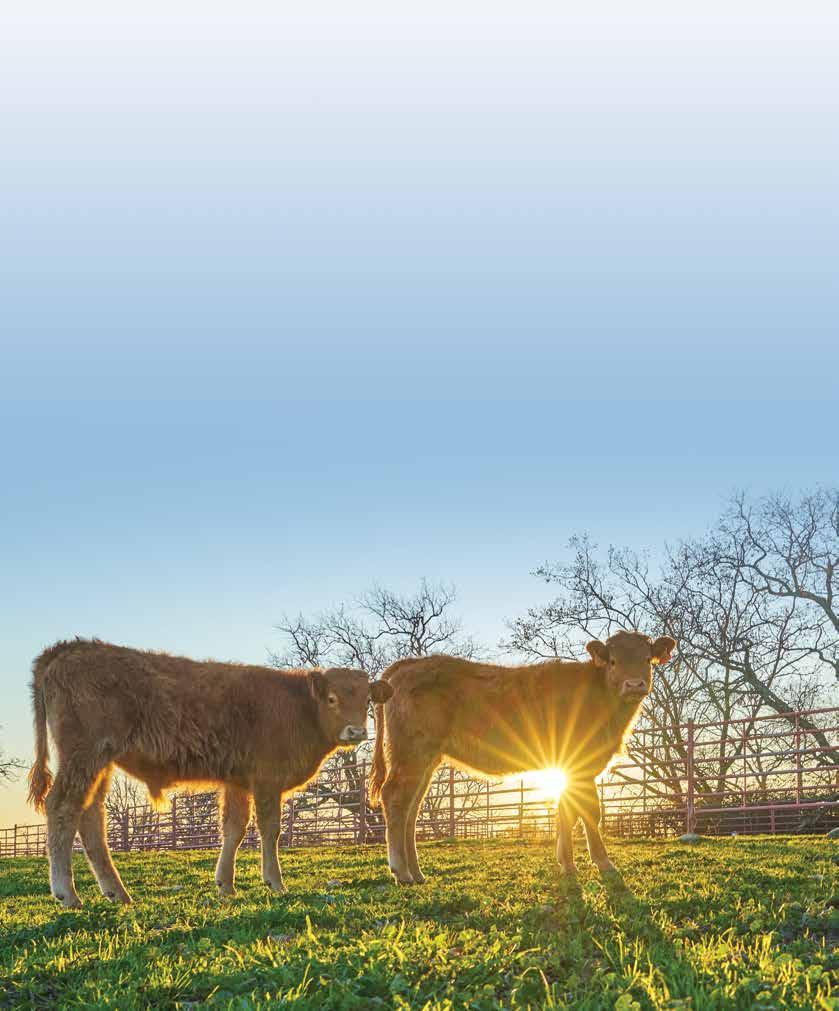
4 minute read
Creep Feeding
BY JIMMY PARKER
Here in the Southeast, we tend to have a wide variety of management practices that involve calving at all times of year. Some producers prefer spring calving, some fall and some year-round. No matter what your preference for calving season, or even the lack of one, creep feeding is a management tool that you should consider. I would like to tell you that it pays tremendous benefits every year, but that is not the case and the economics should be considered annually. Creep feeding has paid its way nine of the last 10 years in the obvious way and all of the last 10 years when some other benefits are considered. One economist that I saw had a chart that showed return on investment for the last 10 years averaging $25.92 per calf per year, with the lone loss year being -$3.6 and the best year being $84.60 per calf. There are many factors that are involved, but the main two are cost of gain and the value of the calf when sold.
A few of the things to be considered are cost of feed, feed conversion and selling price of the calf. The most basic way to decide if creep feeding is for you is by simply comparing the cost of the feed to the value added to the animal in its most basic terms. Generally speaking, for every 6 pounds of a quality creep feed that a calf eats, it will add 1 pound of weight to the animal. When feed costs $.10 per pound, then the cost of a pound of gain should be $.60, and I hope we don’t ever see a year where that does not pencil. If the cost of feed is $.15 per pound, then the cost of gain would be $.90, and that should also work most years. If the cost of creep is $.20 per pound, then the cost of gain would be $1.20, and that is getting closer to breakeven and would have to be looked at a bit more closely. You can also do the math in reverse and say that you expect $1.35 per pound on your calf crop. Divide that by 6 (pounds of feed per pound of gain) and know that you can pay $.225 for each pound of feed (450/ton) to break even or anything less than that should be profitable.
That is the most obvious way to decide whether to creep feed. There are other factors to consider because creep feeding does add value in other ways. One of the most obvious and beneficial is that it takes pressure off the cows. It does reduce their nutritional needs slightly and allows them to maintain a better body condition which in turn should increase the number of cows that breed back and calve again the following year. There is no accurate way to measure this in a normal operation, but even one extra calf every couple of years would add a significant number of dollars to your farm’s bottom line. Another benefit that is often overlooked is the fact that creep feeding will make weaning easier and less stressful. Calves that have been creep fed will go to feed much easier, maintain better health and wean with less stress than those that were totally dependent on their mother.
There are other things to consider as well. The better your calves are, the more creep feeding will pay. Calves with good frame and genetics to grow will do better than those that don’t posses those attributes. Producers also need to realize that all creep feeds are not created equal. Some are far better than others and some won’t work well no matter how good your calves are. Generally speaking, commodity-type byproducts and whole grains tend to be cheaper than complete feeds, but they tend to convert to pounds less efficiently. Some studies have shown that it takes eight or 9 pounds of these byproducts or whole grains to add a pound of gain instead of the 6 pounds we consider when we discuss a quality, balanced creep feed. When that is the case, those grains or byproducts have to be considerably cheaper to make any kind of sense.
I have seen producers use many things as creep feeds, from soyhull pellets to shelled corn and many of those have had issues of one kind or the other. The best option is to use a good-quality feed and be confident that it will more than pay for the added cost. Simply speaking, you tend to get what you pay for and there are very few secrets in the feed business. CPC Grower is a safe and cost-effective option. CPC Developer is also a great option, though it only has enough calories to get calves fat if they are to be weaned later in life and feed for a longer time period. Stocker 13 is another option that many of the producers in the state use as a creep feed. It is also economical and an effective option if you prefer to creep feed with a pelleted feed instead of a textured one.
All things considered, creep feeding has more than paid for itself for the last decade and should for the foreseeable future. The better feed you use and the better genetics your cattle have, the better results you can expect. The decision on which feed to use and when to use it is not as complex as you might think. This is one of those places that you should not try to save your way to a profit. Buy the best creep feed that you can justify and wean a more valuable calf crop that adds to your bottom line and to the joy you get in marketing a higher quality set of calves.






